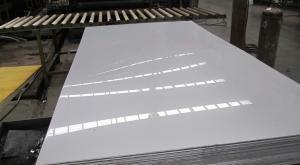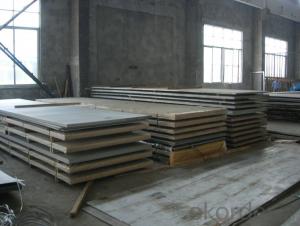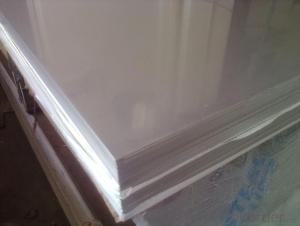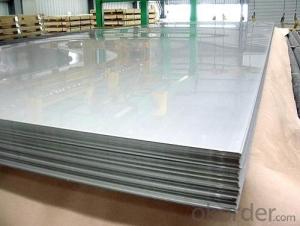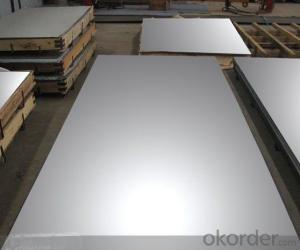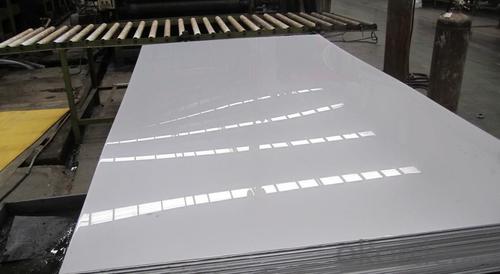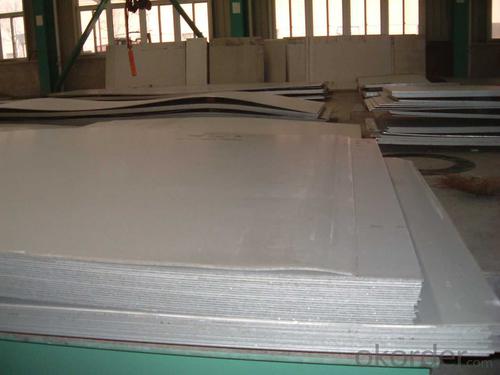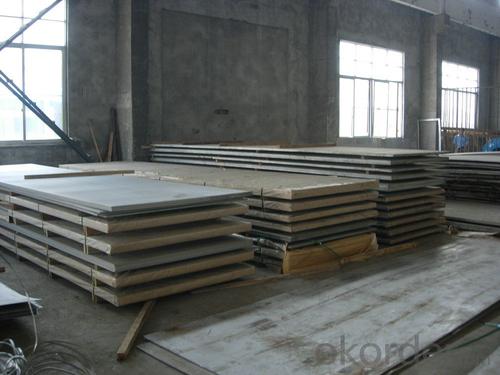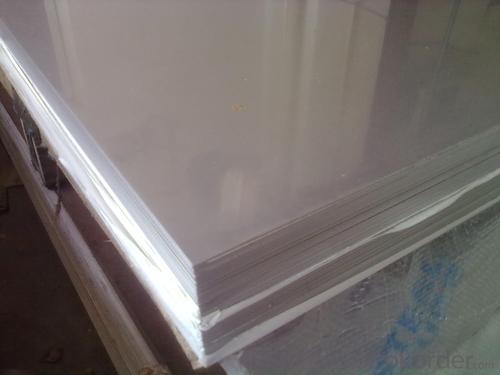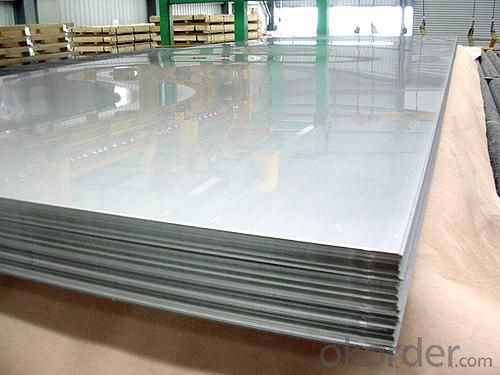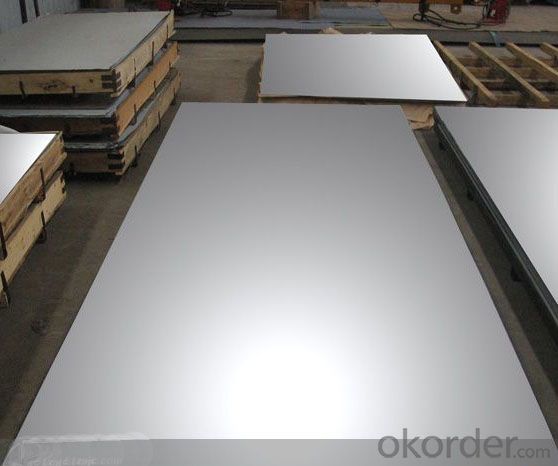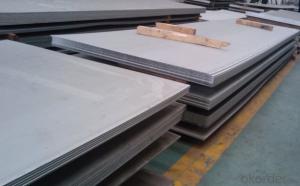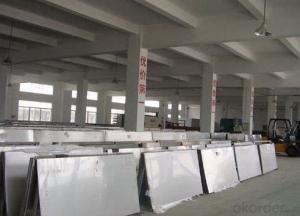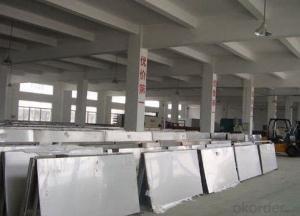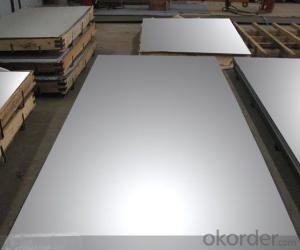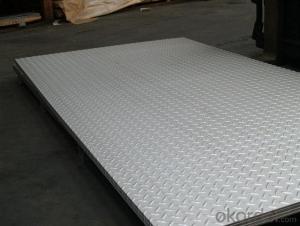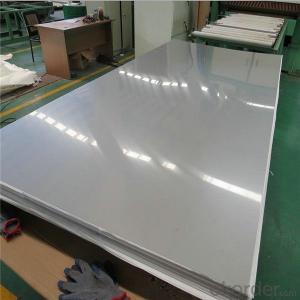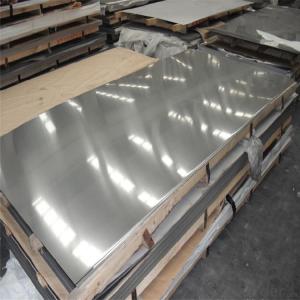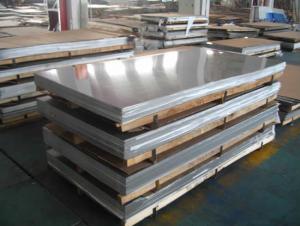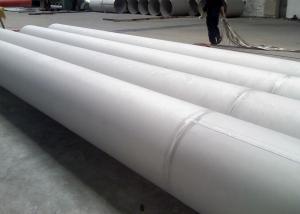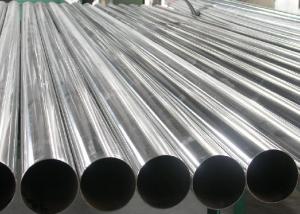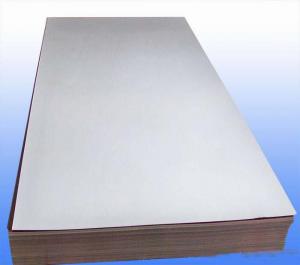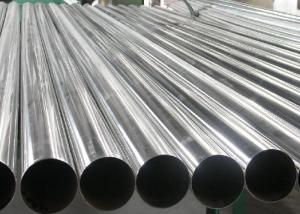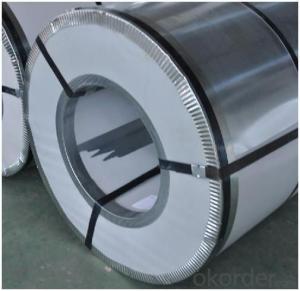Stainless Steel 304 sheet and plate guarantee low price
- Loading Port:
- Shanghai
- Payment Terms:
- TT OR LC
- Min Order Qty:
- 10000 m.t.
- Supply Capability:
- 5000000 m.t./month
OKorder Service Pledge
OKorder Financial Service
You Might Also Like
Specifications of stainless steel
304 stainless Steel Plate
stainless steel plate,steel sheet,steel plate
Standard: ASTM,GB,DIN,JIS,ISO,EN,etc.
TISCO stainless Steel Plate 304/NO.1 finished
stainless steel plate,steel sheet,steel plate
Standard: ASTM,GB,DIN,JIS,ISO,EN,etc.
Delivery short and low cost advantage.
Description of stainless steel:
stainless steel plate,hot rolled stainless steel plate,cold rolled stainless steel plate,stainless steel sheet,steel sheet,sheet
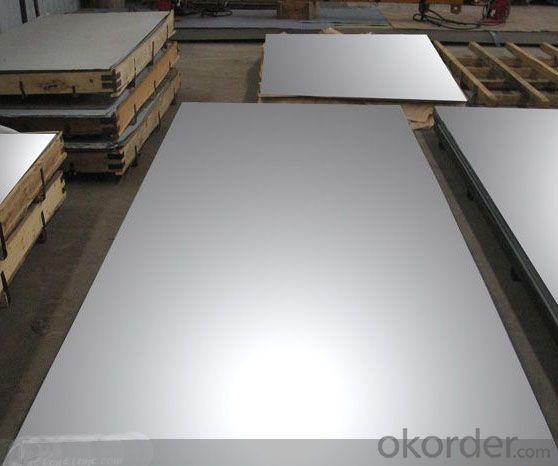
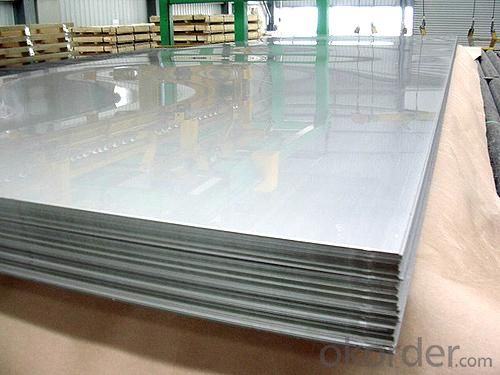
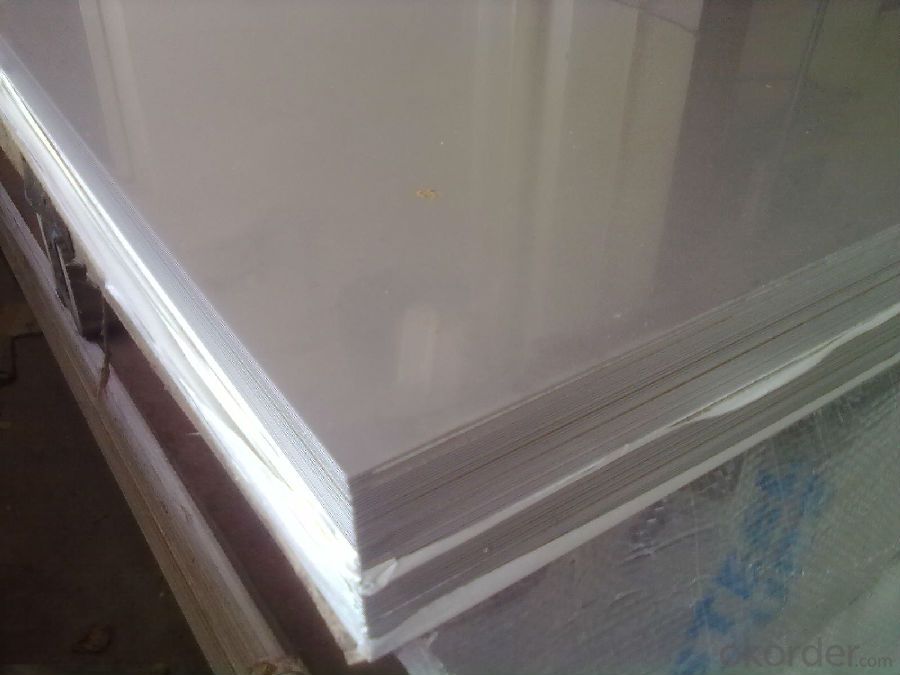
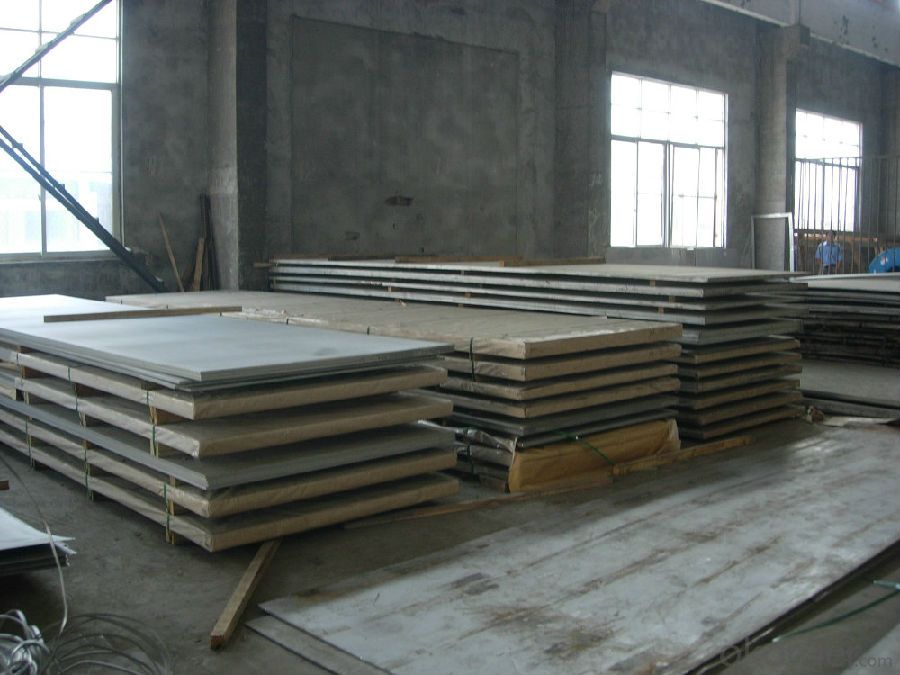
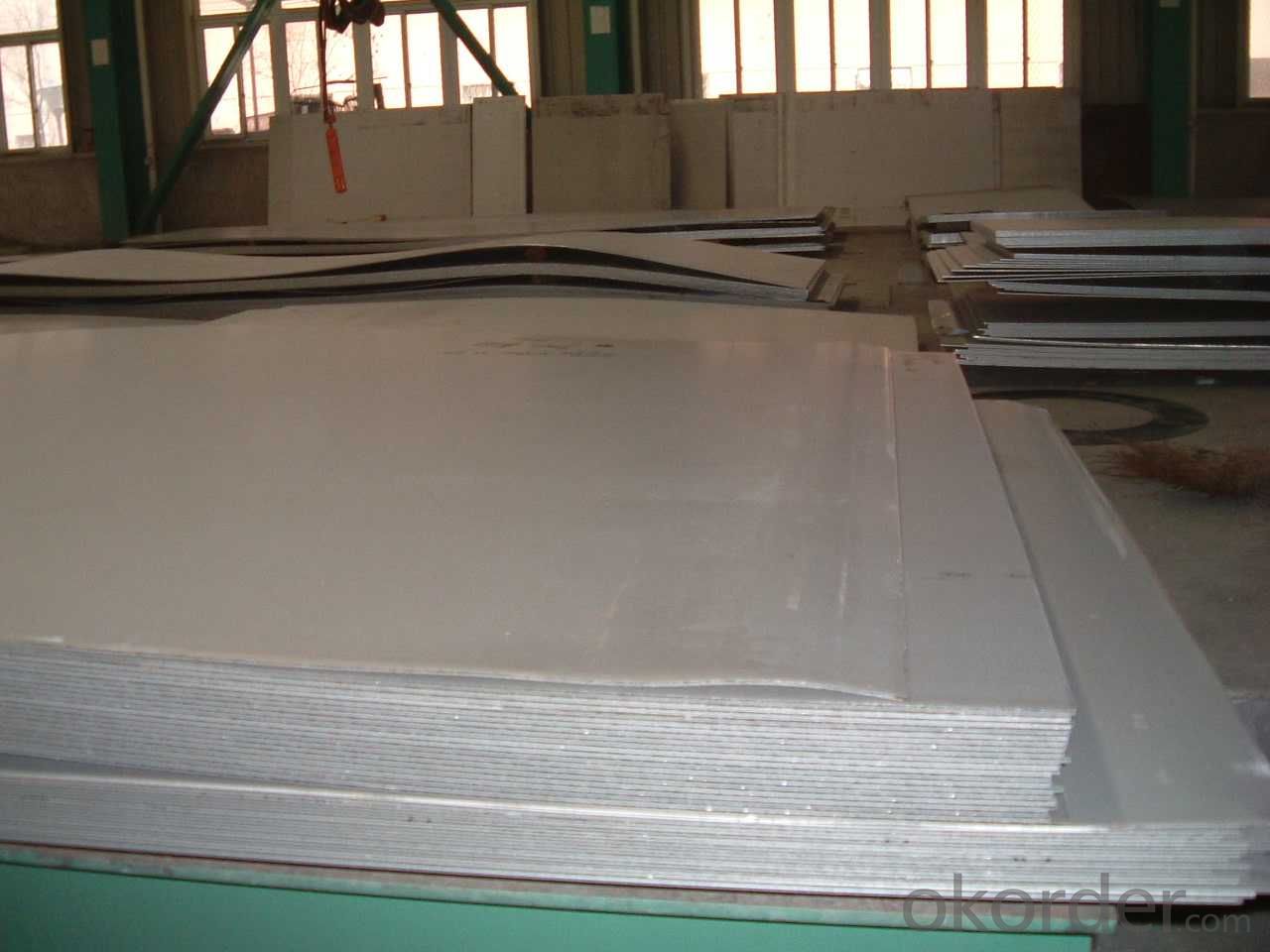
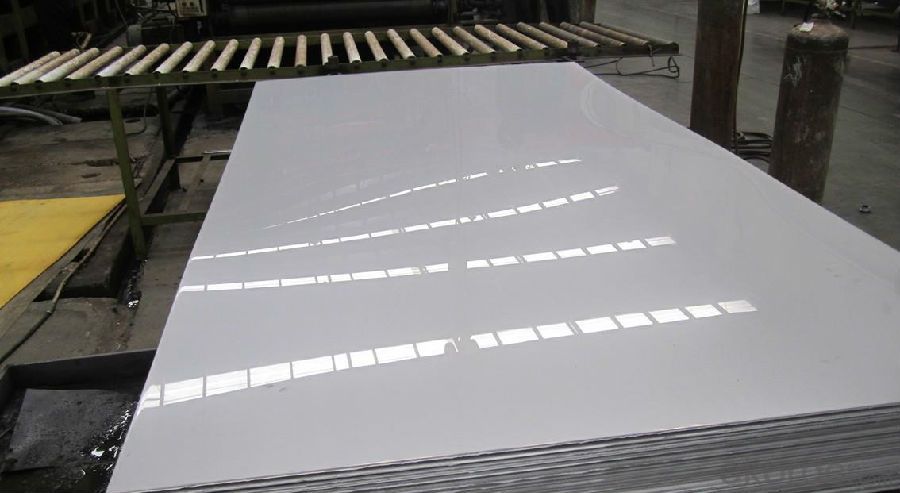
Material of stainless steel:
304,304L,309S,310S,316,316L,316Ti,317L,317L,321,347H,409,409L,410S,420,430,201,202,etc.
Thickness of stainless steel:
From 0.3mm to 100mm
Width of stainless steel:
1000mm,1219mm,1250mm,1500mm,1800mm,2200mm,2500mm or as your requirement
Length of stainless steel:
2000mm,2438mm,2500mm,6000mm,6096mm or as your requirement
Application of stainless steel:
Stainless steel plate applies to construction field, ships building industry, petroleum & chemical industries, war and electricity industries, food processing and medical industry, boiler heat exchanger, machinery and hardware fields. Our company has cooperative relation between the domestic agents. Stainless steel plate can be made accordingto the customers requirements. Fasten delivery. Quality assured.Welcome to order more.
Contacts
If you have any question,please feel free to contact us.
- Q: What is the coefficient of expansion of stainless steel sheets?
- The coefficient of expansion for stainless steel sheets may differ based on the particular grade or alloy of stainless steel employed. Nonetheless, as a general rule, stainless steel has a coefficient of expansion ranging from 10.8 to 16.3 x 10^-6 per degree Celsius. Consequently, for each degree Celsius rise in temperature, stainless steel sheets will expand by approximately 10.8 to 16.3 millionths of their original length. It should be emphasized that various grades of stainless steel might possess slightly different coefficients of expansion. Therefore, it is always advisable to consult the manufacturer or specific material specifications for precise information.
- Q: Can stainless steel sheets be used outdoors?
- Yes, stainless steel sheets can be used outdoors. Stainless steel is highly resistant to corrosion and rust, making it suitable for outdoor applications. It can withstand various weather conditions and is commonly used in construction, architecture, and outdoor furniture due to its durability and aesthetic appeal.
- Q: What are the different types of stainless steel sheet thicknesses available?
- There is a wide variety of stainless steel sheet thicknesses to choose from, each serving different purposes and applications. The most commonly used thicknesses range from 0.4mm to 3.0mm, with increments of 0.4mm. These sheets are typically utilized in general applications such as construction, automotive parts, and household appliances. For more specialized applications, one can find thinner stainless steel sheets with thicknesses ranging from 0.1mm to 0.3mm. These thinner sheets are commonly employed in industries like electronics, telecommunications, and medical equipment manufacturing, where precise and delicate components are necessary. On the other hand, thicker stainless steel sheets, starting from 3.0mm and going up to 20mm or more, are reserved for heavy-duty applications like industrial machinery, shipbuilding, and construction projects that require exceptional structural integrity and durability. It's important to keep in mind that the available stainless steel sheet thicknesses may vary depending on the manufacturer and the intended use. Moreover, custom thicknesses can be manufactured to meet the specific requirements of a project.
- Q: Can stainless steel sheets be used for heat recovery systems?
- Yes, stainless steel sheets can be used for heat recovery systems. Stainless steel is widely recognized for its high thermal conductivity and corrosion resistance, making it an ideal material for heat transfer applications. In heat recovery systems, stainless steel sheets are often used as heat exchanger plates or tubes due to their ability to efficiently transfer heat from one fluid to another. The corrosion resistance of stainless steel ensures the longevity and reliability of the heat recovery system, even when exposed to high temperatures and aggressive environments. Additionally, stainless steel sheets can withstand thermal expansion and contraction, making them suitable for various heat recovery system designs. Overall, stainless steel sheets are a popular choice in heat recovery systems due to their excellent heat transfer properties, durability, and resistance to corrosion.
- Q: Are stainless steel sheets resistant to staining from food?
- Stainless steel sheets possess a remarkable resistance to staining caused by food. Renowned for its exceptional corrosion resistance and non-reactivity with various substances, including food, stainless steel stands as a favored choice for kitchen appliances and cookware. Its capacity to endure prolonged exposure to food without staining or undergoing chemical reactions makes it highly sought-after. Moreover, stainless steel sheets are effortless to clean, making them the perfect fit for food preparation areas where cleanliness is of utmost importance. Furthermore, the sleek and impermeable surface of stainless steel sheets prevents the absorption of food particles and liquids, thus minimizing the risk of staining. In summary, stainless steel sheets offer a long-lasting and stain-resistant alternative for applications related to food.
- Q: What is the elongation percentage of stainless steel sheets?
- The elongation percentage of stainless steel sheets can vary depending on the specific grade and thickness of the material. Generally, stainless steel sheets have a moderate elongation percentage, typically ranging from 40% to 60%. However, certain grades of stainless steel with higher nickel content, such as austenitic stainless steel, can exhibit greater elongation percentages, often exceeding 60%. It is important to note that elongation percentage is a measure of the material's ability to deform plastically before fracturing, indicating its ductility.
- Q: How do you prevent scratches or dents on stainless steel sheets?
- To prevent scratches or dents on stainless steel sheets, it is important to handle them with care. Avoid dragging or sliding heavy objects across the surface, use protective covers or pads when placing items on the sheets, and refrain from using abrasive cleaning tools or harsh chemicals that can cause damage. Regular cleaning and maintenance with mild cleaners and soft cloths can also help maintain the stainless steel's appearance and minimize the risk of scratches or dents.
- Q: Can stainless steel sheets be used for food processing equipment?
- Yes, stainless steel sheets can be used for food processing equipment. Stainless steel is a popular choice for equipment used in the food processing industry due to its excellent corrosion resistance, durability, and hygienic properties. It is resistant to staining, rust, and chemical damage, making it suitable for contact with food and cleaning agents. Stainless steel sheets are also easy to clean and maintain, reducing the risk of contamination. Additionally, stainless steel is non-reactive, meaning it does not interact with food or alter its taste, ensuring the safety and quality of processed food.
- Q: What's the difference between stainless steel hot rolling and cold rolling?
- 1. cold-rolled steel plate due to a certain degree of hardening, low toughness, the price is more expensive;2. surface anaerobic cold rolling scale, good quality;3. cold deformation products, high dimensional accuracy, good surface quality;4. cold rolling because of its production process in all walks of life in a wide range of applications, such as various types of cold stamping parts, cold rolled cold extrusion profiles, cold coil spring, cold drawn wire, cold heading bolts.Hot rolling (hot rolling): relative to cold rolling, cold rolling is performed under recrystallization temperature, while hot rolling is rolling above recrystallization temperature.
- Q: Stainless steel plate surface treatment: ink, wire drawing, polishing what role?
- Polishing, also known as mirror treatment, no Silk Road, brightness ranging from 4K-12K. By acid water surface grinding, processing costs slightly higher than oil mill and wire drawingI hope I can help you!
Send your message to us
Stainless Steel 304 sheet and plate guarantee low price
- Loading Port:
- Shanghai
- Payment Terms:
- TT OR LC
- Min Order Qty:
- 10000 m.t.
- Supply Capability:
- 5000000 m.t./month
OKorder Service Pledge
OKorder Financial Service
Similar products
Hot products
Hot Searches
Related keywords
